- Bridgestone
- Bridgestone E8 Commitment
- My Firestone
- Tires Plus
- Marko Ibrahim
- Bridgestone Retail Operations
- Bridgestone Americas
- Boys and Girls Clubs of Middle Tennessee
- Club’s Andrew Jackson Clubhouse
Connected Mobility Solutions: JK’s big differentiator
- By Sharad Matade
- December 23, 2020
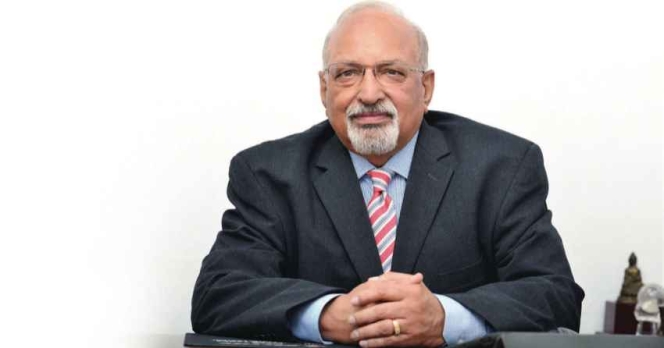
Around six years ago, JK Tyre joined hands with Pune-based Treel Mobility, which has now been acquired by the tyre company. Today JK Tyre is the only tyre company in India that indigenously manufacturers Tyre Pressure Monitoring Systems (TPMS) based on sensor technology. TREEL provides live data on the most important variables: tyre temperature, tyre pressure, tyre positions, locations, distance travelled and expected tyre life through our algorithm thus capture almost full health of the tyres. We provide our TMAS software for tyre management.
JK Tyre offers sensor technologies for both OE and aftermarket.

“The sensors can alert if the air pressure increases and drops by more than one psi. Our sensors are a multi-utility product and come with around five years of life,” Misra said, adding that the company’s sensor technologies are getting good response from the market.
JK Tyre’s manufacturing operations comprise of 12 state-of-the-art manufacturing facilities. The company has nine modern plants in India (three plants in Mysuru, three plants in Haridwar and one plant each in Banmore (M.P.), Kankroli (Rajasthan) and Chennai and three plants in Mexico – an aggregate production capacity of around 32 million tyres per annum.
The company is engaged in the manufacture and marketing of automotive tyres, tubes and flaps. JK Tyre’s products comprise Truck/Bus Radial & Bias, Passenger car radials, 2/3-wheeler tyres, LCV & SCV Bias & Radial, off-highway tyres (OTR and Farm), as well as speciality tyres for military/ defence, industrial and farm applications besides racing tyres.
Data generated through the sensors is not only helping JK Tyre to develop better products but provides an efficient and cost-effective service to its customers, especially in Truck Radial tyre space. “Service efficiency is what makes the difference to a customer. It is very important factor,” explained Misra.
JK Tyre is also in “Mobility Solutions”, where the company takes complete control of the tyre management and sells tyres by kilometres to the customers.

“Having such solutions availed, fleet owners do not have to worry about the most capital intensive part tyres. They do not have to buy tyres. We provide the right quality of tyres as per their requirements and then we make sure that tyres are optimally used and well maintained. To ensure performance and better life of tyres, we need lots of information and timely data collection which is not humanly possible. But now we can have all the data since tyres are fitted with sensors,” said Misra.
Misra claims that JK Tyres is the first company in India to provide such kind of services to the fleet companies.
“JK Tyre will continuously keep looking into the enhancement of sensor technologies in future,” he said.
With the help of JK Tyre’s service management and support around 3% fuel can be saved with the better pressure, alignment and maintenance of the tyres, whereas the tyre life is improved anywhere between 5% to 10%. “We have also seen big improvement in the downtime of the vehicles as well,” added Misra. The company extended this solution across more than 800 fleet owners. JK Tyre today has over 50 state-of-the-art Truck Wheels centres across the country which provides services enabled by high-quality machinery including computerised wheel alignment, wheel balancing, automated tyre changing, tyre rotation, nitrogen for tyre inflation, all under one roof to provide a 360-degree solution and excellent experience to the customer.
For EV mobility, the company is getting aggressive. JK Tyre has done benchmarking in the markets where the EV is largely being used. “We have tested and kept the tyres ready for EV cars. We have developed special tyres and have also done benchmarking with tyres which are being used by cars like Tesla / Kona,” said Misra. We intend offering special tyres for EV application backed with sensor technology.
The Bureau of Energy Efficiency (BEE), Bureau of Indian Standards (BIS) and Ministry of Road Transport and Highways (MoRTH) is planning to introduce star rating, like electric appliances, for tyres based on their rolling resistance, wet grip and rolling noise. In Europe also, the labelling is provided on tyres for rolling resistance, braking on wet surfaces and external noise.
However, India did not have facilities to test wet grip in India till recent times. For the export purpose, the Indian tyre companies used to get their tyres tested for wet grip from outside India.
“In India, the star ratings have been principally agreed and accepted. The levels from 1 to 5 for RR and wet grip have also been finalised for all type of tyres. The star rating will come soon in India,” said Misra. However, the data for wet grip & rolling noise is yet to be generated to confirm the specs so far considered.

Initially, the star rating will be voluntarily for the first two years and then it will become mandatory. “It will be interesting to see how star rating will influence customers’ buying behaviour,” he added.
The company is also establishing its wet grip testing capability. JK Tyre has become the first tyre company in India to buy a traction trailer to test wet grip. The traction trailer has been installed at NATRiP, Indore. International Centre for Automotive Technology and Automotive Research Association of India are in also in the process of certifying complete infrastructure for testing for Indian Tyre Industry for all category of tyres under review.
“Based on the readiness at ICAT and later at ARAI, the tyre industry will generate data on wet grip,” and approach certification body to align the specifications.
The company is currently using the traction trailer for its own purpose and will explore possibilities to provide wet grip testing service to other players in the Indian market.
For the commercial tyre business, the company’s recent breakthrough is Fuel Saver Technology, which saves up to 8% to 10% fuel. The company introduced its fuel-saving technology for its TBR tyres and now it will be brought for tubeless tyres which has also been extended to Tubeless Truck Tyres. The company has also successfully launched a radial mining tyre in the country.
As for as the passenger vehicle tyres, JK Tyre will launch an ultra-high-performance tyre, being developed in Europe. “We have tested our ultra-high-performance tyre up to 300 km/h on one of the best tracks available in Germany by test experts against best in class- tyres. We also picked up an Indian brand which declared their tyre as UHP tyre. Our tyre is far superior in terms of overall- handling, performance, control, wet grip and noise. We will launch this product soon,” said Misra.
In the auto industry, traditional rivals are coming together to meet future demand and tackle various challenges. For instance, BMW and Daimler have come together for autonomous cars. According to reports, the agreement to develop automated driving technology will focus on assisted driving systems, automated driving on highways, and automated parking. However, regarding this Misra does not see possibility of such collaborations on new technology sharing or development in the Indian tyre industry.
“Being a member of various committees in the industry, we had jointly mooted an idea of having a common research and development centre with the support of the Government of India where we have every possible capability for technology development. Even if we get into that, it will not be technology sharing but yes a great platform can get created for Technology development.
For JK Tyre, fuel economy, longevity and safety is paramount for its products. “Safety is expected to be inbuilt, though customers awareness needs to be enhanced. Now fuel efficiency and rolling resistance are gaining traction, particularly from OE perspective. For the aftermarket, longevity continues to be the top priority,” said Misra.
 JK Tyre is also building capabilities in various fronts. JK Tyre’s new Research and Development (R&D) facility - Raghupati Singhania Centre of Excellence (RPSCOE) at Mysore has capabilities for all aspects right from testing the raw rubber sourced to creating simulations and predictive techniques for future offerings. Along with the installation of the traction trailer, the company was the first to have the Semi-Anechoic Chamber that uses specialised software for noise, vibration and harshness and data analysis. The company also has a centre of excellence at IIT Madras which is a joint venture between the company and IIT Madras. “We have developed many predictive technologies and other solution at the Centre. The virtual proving ground has been setup where you can establish the actual performance for the tyres on a vehicle without having actual tyres or vehicle. This is a very advanced concept. We are developing lot of techniques to master and get the full benefit in this virtual proving ground. Various data for the vehicles and a tyre is fed into the software and you can put data of any test track and drive the car with different speeds. You can feel the real performance. With this virtual proving ground capacity, we can generate data for tyres and determine what kind of tyres are best suited for a particular car.”
JK Tyre is also building capabilities in various fronts. JK Tyre’s new Research and Development (R&D) facility - Raghupati Singhania Centre of Excellence (RPSCOE) at Mysore has capabilities for all aspects right from testing the raw rubber sourced to creating simulations and predictive techniques for future offerings. Along with the installation of the traction trailer, the company was the first to have the Semi-Anechoic Chamber that uses specialised software for noise, vibration and harshness and data analysis. The company also has a centre of excellence at IIT Madras which is a joint venture between the company and IIT Madras. “We have developed many predictive technologies and other solution at the Centre. The virtual proving ground has been setup where you can establish the actual performance for the tyres on a vehicle without having actual tyres or vehicle. This is a very advanced concept. We are developing lot of techniques to master and get the full benefit in this virtual proving ground. Various data for the vehicles and a tyre is fed into the software and you can put data of any test track and drive the car with different speeds. You can feel the real performance. With this virtual proving ground capacity, we can generate data for tyres and determine what kind of tyres are best suited for a particular car.”
The company also uses a steering robot to collect data to have accurate and objective information.
For two-wheeler tyres, JK Tyre is focusing on tubeless tyres. The company plans to expand its two-wheeler tyre production from the current capacity of 650000 tyres per month. “We are in the process of expanding the range for high-end bikes. We are also planning to penetrate deeper into the OE space,” said Misra. The company is already OE supplier of two-wheeler tyres for Hero and Bajaj.
The biggest challenge for a technical person in the tyre industry is to anticipate the customer requirement stated as well as unstated and develop the right tyre. “The main challenge is to keep improving the performance and keep the cost low,” added Misra.
The Indian customer is very aware and knowledgeable hence continuous upgradation of technology and products is the key to success.
Fornnax Inaugurates 12-Acre Global Hub For Recycling Innovation
- By TT News
- November 27, 2025
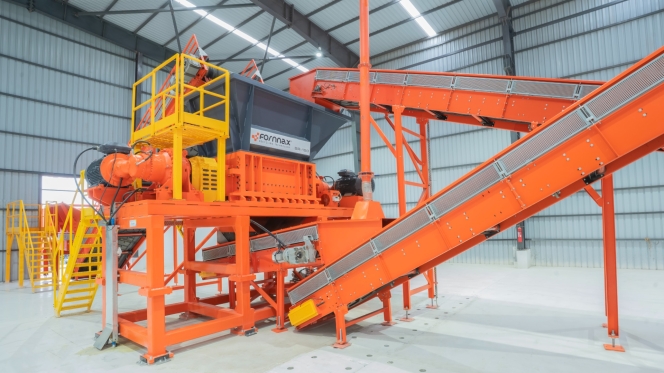
Fornnax has officially launched one of the world's largest integrated hubs for recycling innovation: a New Product Development centre and demo plant spanning over 12 acres. This facility is a critical milestone in the company's strategic vision to become a global leader in recycling solutions by 2030. It is designed to accelerate the advancement of recycling technology through a comprehensive, customer-focused approach.
The centre’s core function is its New Product Development framework, which is built upon a meticulous Gate Review Process. This system ensures precision from conception to completion. The journey begins with market research and ideation from the Sales and Marketing team, followed by a strategic review by the Leadership Team. The Design Team then creates detailed plans that are evaluated by Manufacturing, Service and Safety teams. After final approval, a functional prototype is built and subjected to a rigorous six to eight-month validation phase. The process concludes with design optimisation for mass production, officially launching the equipment for the global market. This method not just upgrades Fornnax's shredders and granulators – enhancing their capacity, energy efficiency and operational availability to 18–20 hours per day – but also validates the equipment for up to 3,000–15,000 hours under real-world conditions

A key feature of the facility is its open-door policy for clients. Customers can bring their specific materials to the demo plant to test equipment performance across various machines and conditions, providing a risk-free environment for informed investment decisions. The centre will also drive research into emerging recycling applications, such as E-waste, cables and lithium-ion batteries, where specialised engineering teams will conduct feasibility studies to design tailored solutions.
Beyond technology, the facility includes an OEM training centre dedicated to developing a skilled workforce. The programme trains operators and maintenance engineers, who gain hands-on experience before being deployed to support Fornnax's customer base. The company will also deliver comprehensive corporate training to domestic and international clients, empowering them with the expertise for optimal plant operation and maintenance. By uniting R&D, testing and training under one roof, Fornnax is establishing a powerful foundation to scale its offerings and lead the next generation of recycling technology.
Jignesh Kundariya, Director and CEO, Fornnax, said, "Innovation in product development is the key to success of becoming a global leader. With this new facility, we now have the speed, flexibility and controlled environment to design, test and validate new technologies in just six to eight months, something that would take significantly 4–5 years at a customer site. Each machine will undergo validation according to global standards, with every critical part and assembly rigorously tested under Engineering Build (EB) and Manufacturing Build (MB) protocols. Our goal is to empower customers with clarity and confidence before they invest. This facility allows them to test their own materials under real-world conditions, compare machines and see results firsthand. It’s not just about selling equipment; it’s about building trust through transparency and delivering solutions that truly work for their unique needs.”
Smithers to Expand Rolling-Resistance Testing Capabilities in China
- By TT News
- November 21, 2025
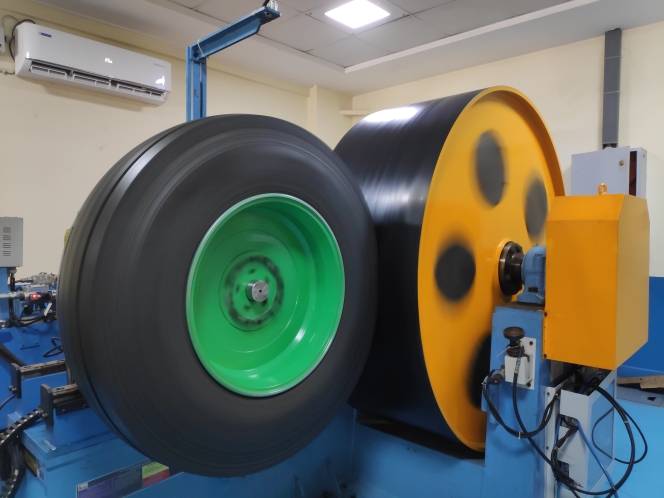
Smithers, the US-based testing and consulting group, is expanding its tyre testing operations in China with three new capabilities designed to better replicate real-world driving conditions. The investment will enhance the company’s rolling-resistance testing at its Suzhou tyre and wheel centre, strengthening its offering to global carmakers and tyre manufacturers.
The new features focus on factors that can influence vehicle energy loss, range, and overall efficiency—a growing concern as regulators tighten standards and EV makers push for longer driving range.
One new capability will allow rolling-resistance testing to be carried out with variations in slip and camber angles for passenger car and light truck tyres. Standard tests are performed at zero degrees, but even small changes in wheel alignment or body movement during real driving can affect energy consumption. The enhanced system lets customers study these effects and refine tyre designs accordingly.
Smithers is also adding high- and low-temperature rolling-resistance testing for truck and bus tyres, an extension of the temperature-controlled testing it introduced for passenger tyres in 2022. The company said demand has risen as manufacturers look to understand how cold weather affects range—a key issue for electric commercial vehicles.
A third new service will allow tyres to be tested together with chassis components such as half-shafts and brake discs. This gives OEMs independent data on how these parts contribute to overall resistance, helping them to identify where energy is being lost and to fine-tune vehicle efficiency.
All three capabilities are expected to be online by 1 December 2025.
“Smithers is seeing increased demand on a global scale for testing of tires and vehicles that more closely mimics real-world conditions,” said Derek Read, Vice President of Asia Pacific / Global Development, Materials Science and Engineering, Smithers. “These new capabilities are strategic investments into the refined, scenario-based testing our clients require to improve both tire and tire-chassis-vehicle system performance.”
Autonomous Robots Transform Continental Retreading Operations
- By TT News
- November 19, 2025
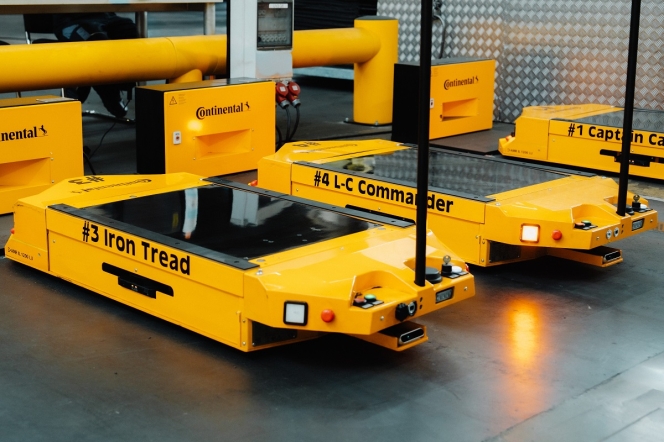
Continental's Hannover-Stöcken plant is pioneering a new era in sustainable manufacturing by seamlessly integrating advanced robotics into its core operations. Since their deployment in March 2025, a team of seven autonomous mobile robots (AMRs) has become the central nervous system for material transport, fundamentally reshaping the workflow for retreading truck and bus tyres.
This shift to automation has profoundly changed the human role on the production floor. Employees, once tasked with the physically strenuous job of manually moving heavy tyres using cranes and trolleys, are now focused on more cognitively demanding responsibilities. Their expertise is directed towards machine setup, process oversight and meticulous quality control, making their work more ergonomic and skilled.
The AMRs operate with sophisticated independence, navigating the production hall using a fusion of sensors, 360-degree cameras and AI-driven software. They efficiently ferry ‘green’ tyres between critical stages: from the building machine, where fresh rubber is applied, to the curing presses for vulcanisation and finally towards inspection. This automated coordination is digitally linked to the plant's order system, allowing for dynamic routing to optimise workflow and manage capacity.
This initiative is a cornerstone of Continental's global strategy to modernize tyre production through digitalisation and smart automation. The success in Hannover has already inspired the rollout of similar robotic solutions across the company's international network, from North America to Asia. The move aligns perfectly with the plant's sustainable mission, which is the ContiLifeCycle process itself. This process breathes new life into used tyre casings by carefully inspecting them, applying new tread rubber and vulcanising them to create a product that performs like new. The environmental benefit is substantial, as up to 70 percent of the original tyre's material is reused, significantly conserving resources.
The human element was crucial to the project's success. Continental ensured widespread employee acceptance through comprehensive training and even involved the workforce in christening the robots with creative names. This thoughtful approach has cemented the AMRs not as mere machines but as valued teammates in a shared mission to make tyre production more efficient, sustainable and future-ready.
Felix Hantelmann, head of the ContiLifeCycle plant, said, “Self-driving robots have been supporting our production workflow for six months now. They handle simple, repetitive transport tasks such as moving a tyre from one point to another. The robots are directly connected to our digital order system, so they know exactly where to go and how to coordinate with each other to get there. They are a valuable addition to our daily operations and help create a safe, efficient and ergonomically optimised production environment.”
Continental Deploys Vacuum Tech For Real-Time Tyre Wear Particle Analysis
- By TT News
- November 18, 2025
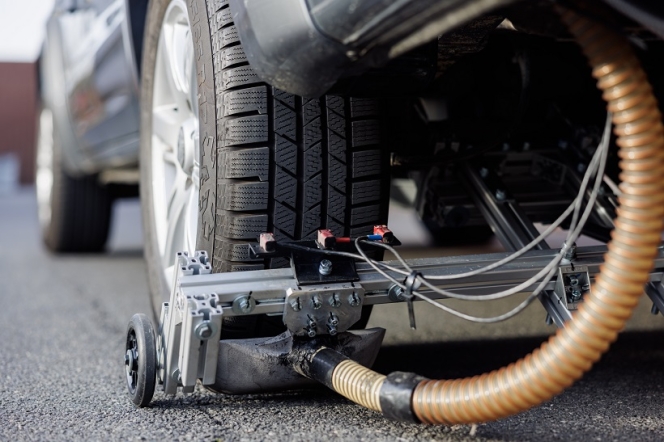
Continental's leadership in reducing tyre wear is fundamentally driven by its pioneering research into how particles are generated. A pivotal element of this strategy is the recently concluded OLRAP project, a collaboration with the Technical University of Braunschweig that broke new ground in real-world particle analysis. The research team engineered a complex experimental vehicle, outfitting it with a custom vacuum system and sensitive particle sensors. This innovative setup enabled the real-time collection and analysis of airborne particles directly at their source – the rolling tyre – under actual driving conditions. The resulting data, which for the first time correlates specific driving dynamics like aggressive acceleration and hard cornering with particle emissions, provides an unprecedented understanding of wear patterns.
This deep, data-driven insight is what directly fuels Continental's product development. By knowing precisely how and when wear occurs, engineers can make targeted optimisations to tread patterns and rubber compounds. The objective is to systematically design tyres that shed less material, thereby directly reducing their environmental footprint from abrasion. This development process rigorously maintains the critical safety and performance standards that drivers demand.
The tangible success of this research-to-development pipeline is confirmed by independent analysis, which shows Continental tyres abrade 11 percent less material than the competitor average. Furthermore, this proactive research and development strategically prepares the company for upcoming regulations like the Euro 7 standard, which will impose limits on tyre wear emissions. Beyond its own laboratories, Continental extends this commitment through cross-industry efforts, co-chairing the Tire Industry Project and contributing to public initiatives aimed at capturing tyre particles from road runoff. Through this integrated approach, Continental is leveraging fundamental scientific discovery to create more sustainable mobility solutions.


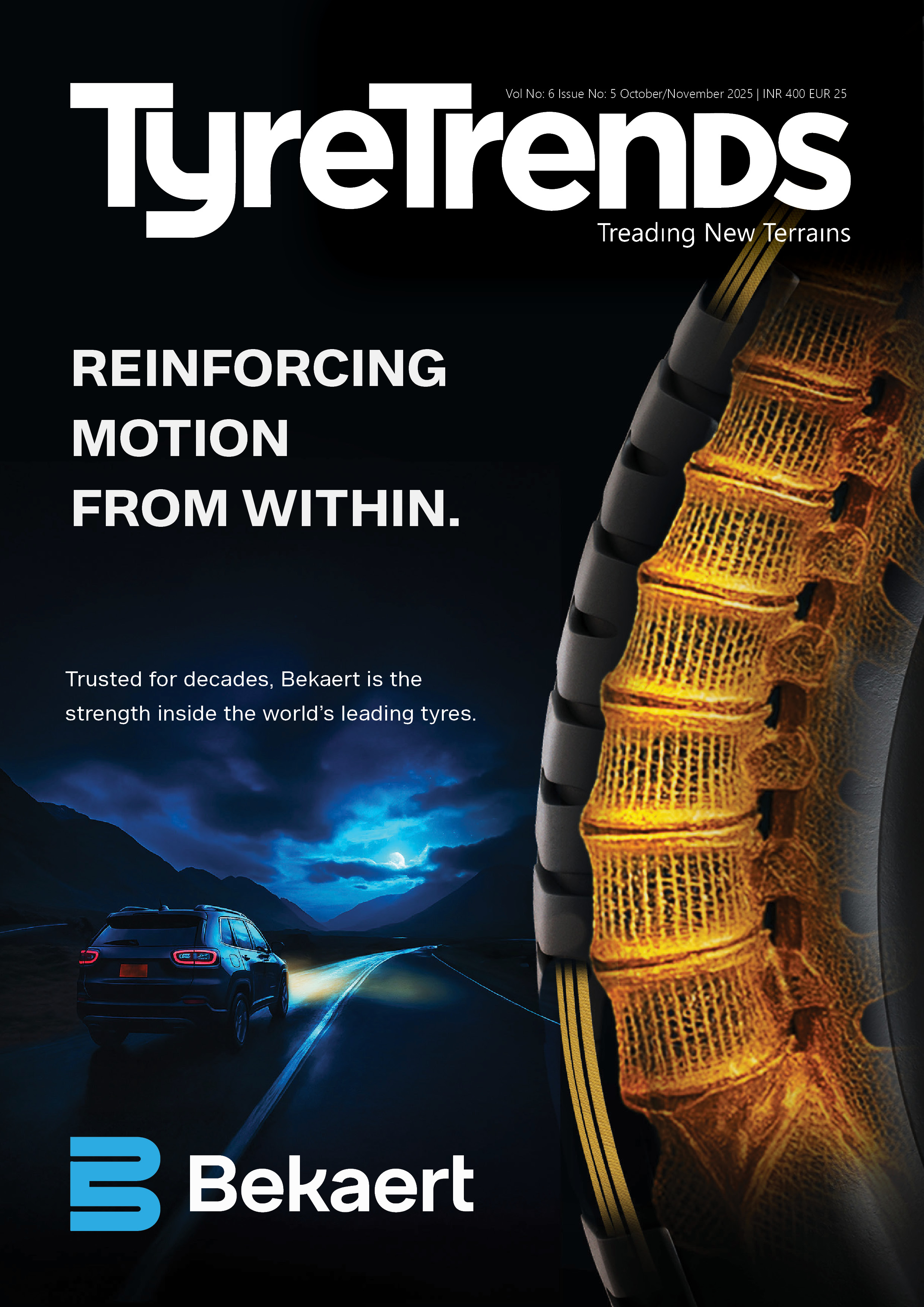

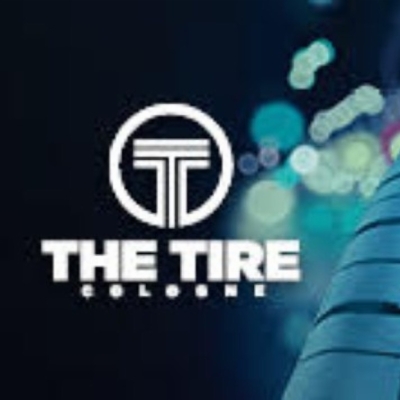
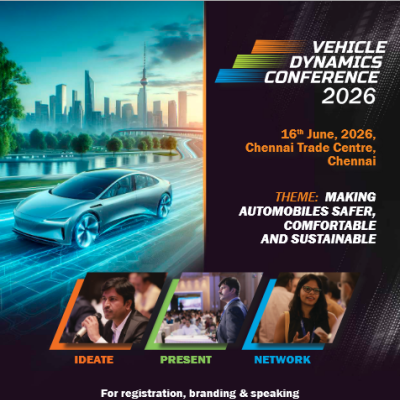

Comments (0)
ADD COMMENT